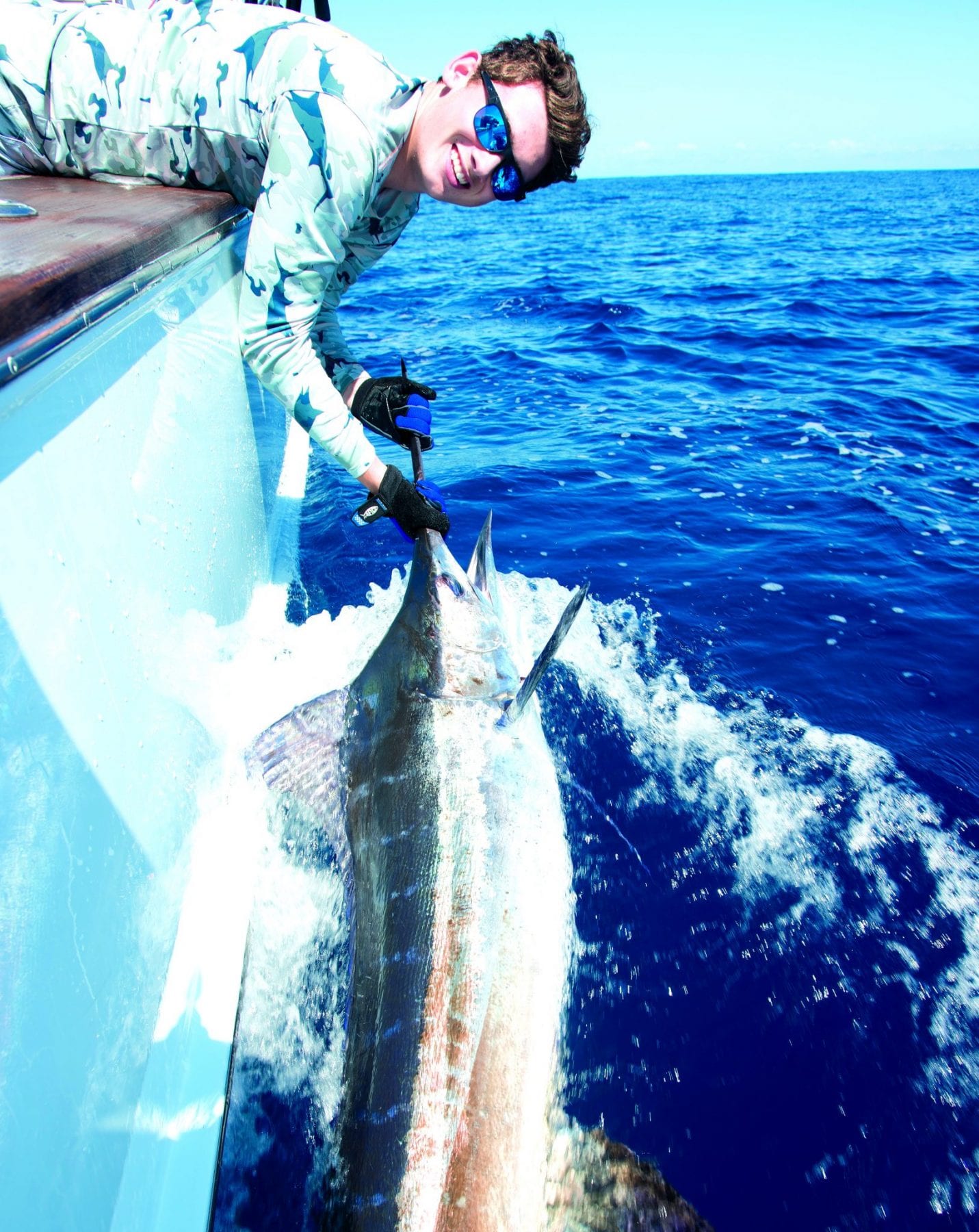To understand why the very best marlin fishing on earth is offshore Costa Rica, read on.
The big fish eat the little fish. A law of nature. It follows that if you want to find big fish, look for little fish first. As is often said, “find the bait, find the fish”.
So, it’s a big ocean. Where do you look for the little fish? The answer is, where there is even smaller food. Every fisherman learns where to look from experience, study and luck. We do know a lot about it. Look around the river mouth where nutrients washing from upstream create the environment we are looking for. Look around the rocks, at the edge of a drop off where shallow goes to deep in a hurry. Lots of places to look.
What if the proper environment could be created? Actually, the idea has been used for centuries to aggregate marine life. Various kinds of baited and un-baited traps such as the man-made shelters used in the Bahamas and elsewhere to provide cover for spiny lobster. This shelter is then visited by the fisherman whose prey has aggregated there. Easy pickings. There are lots of examples around the world. If you place a few rocks on the bottom of a lake, you may attract aquatic life.
In the context we are discussing here, two structures are relevant. One natural, seamounts, and one man made, FAD’s.
Seamounts are just that. Undersea mountains. The currents push against these structures creating an upwelling from the depths. This water, while rising up to the surface, carries a wealth of nutrients with it creating a great food source closer to the surface where many fish stay.
FAD’s on the other hand, are man made structures that are tethered to the bottom of the ocean, but on top of the mountain. For use by recreational anglers, these are usually an array of some sort of material that will provide cover for bait fish. This can be canvas stirps, netting, tarps, or whatever works. This is held under the surface by submerged buoys. Local conditions dictate the exact strategy to be used. 50’ down is common.
Enough about the history, biology and other such boring stuff. FAD fishing is fun because that is where the big fish come to eat the little fish.
Placing FADs for recreational use in Costa Rica is only a few years old. In one form or another, they are found all along the Pacific Coast with Guanacaste now coming into the hunt. The FAD capitals of Costa Rica have to be Golfito in the South, and Quepos/Los Suenos on the Central Coast. Farther “North” in the area of Guanacaste the wind can cause problems in both maintaining and fishing the FADs. This time of year. however, the winds have subsided, and the calm seas beckon anglers looking for great off shore fishing.
I don’t think anyone knows how many FADs there are off shore Costa Rica. New ones are put out from time to time, and these devices have a life span that will cause them to be lost for one reason or another after a period of time especially if expensive maintenance is not done.
These devices are usually between 80 and 150 miles off shore making them somewhat difficult to use. Experienced private sportfishing boats make great use of this resource, but the casual boat owner should be cautious before engaging in this sort of fishing. Although there is no secret as to where many of these FADs are located, they are still not that easy to find, and most of these trips are multi-day affairs which to me means a quality boat, and an experienced crew.
Luckily, there are a number of opportunities to find such boats, and FAD opportunities are almost always available.
One reason for that is that Costa Rica is now an almost year around fishing destination. To go along with the world class sail fishery, the great fishing for Yellow Fin Tuna, Mahi, Rooster Fish, bottom fish and etc., the seamounts now provide a dependable Marlin bite. Especially in the “Green” season which, until this new Marlin fishery took off due to the seamounts becoming more popular, used to be called the “Low”season. No more. Trips the seamounts have resulted in documented Blue Marlin catches many, many times in the double digits per day of fishing, and trips have been recorded where 30 or more Blue Marlin were released over a couple of days. Unbelievable but true. I have personally been there and done that.
We are totally a catch and release crowd down here in Costa Rica with circle hooks being mandated for bait fishing.
I need to say that there is another structure also called a FAD being used in this area. The use of drifting structures to attract tuna have been in widespread use several places in the world for many years. Technology has made it even more effective as a commercial fishing strategy. A number of studies have been done documenting the potential damage this does to the target population. Use of GPS tracking now allows the owners of these floating bait farms to quickly locate their drifting FADs. Purse seiners then arrive, surround the device and take everything that is there. This is all catch and no release. Everything in the purse net is killed. Some of it is tuna, some other fish, and some is porpoise, turtles and other “bi-catch”. Brutal. Until you have seen it in action, you can not imagine. A couple of years ago, Costa Rica was very progressive in banning commercial tuna fishing closer than 45 miles from shore. It has helped a lot, but they are still there. Just farther out.
The devil with all that, let’s go fish the FADs, and release a bucket list of Blue Marlin.
